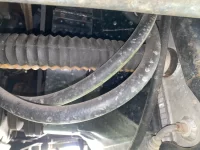Well— I guess I celebrated victory too early

No idea why, but when I was driving it around yesterday it shot up to 240º pretty suddenly. I pulled over right away and after a while of letting it cool I limped it back home. I had to stop several times as the temps just kept building.
Double checked timing this morning— I'm somewhere between 6º-8º btdc. the timing mark seems to slightly wonder +/- 2º.
I sprayed all over the place looking for a vacuum leak and I didn't find an obvious leaks. Maybe a tiny vacuum leak at the passenger-rear of the intake manifold, but not definitive. All vacuum hoses are new.
I got a head gasket tester kit that I'll try out next.
Feeling the all too familiar sting of defeat.





